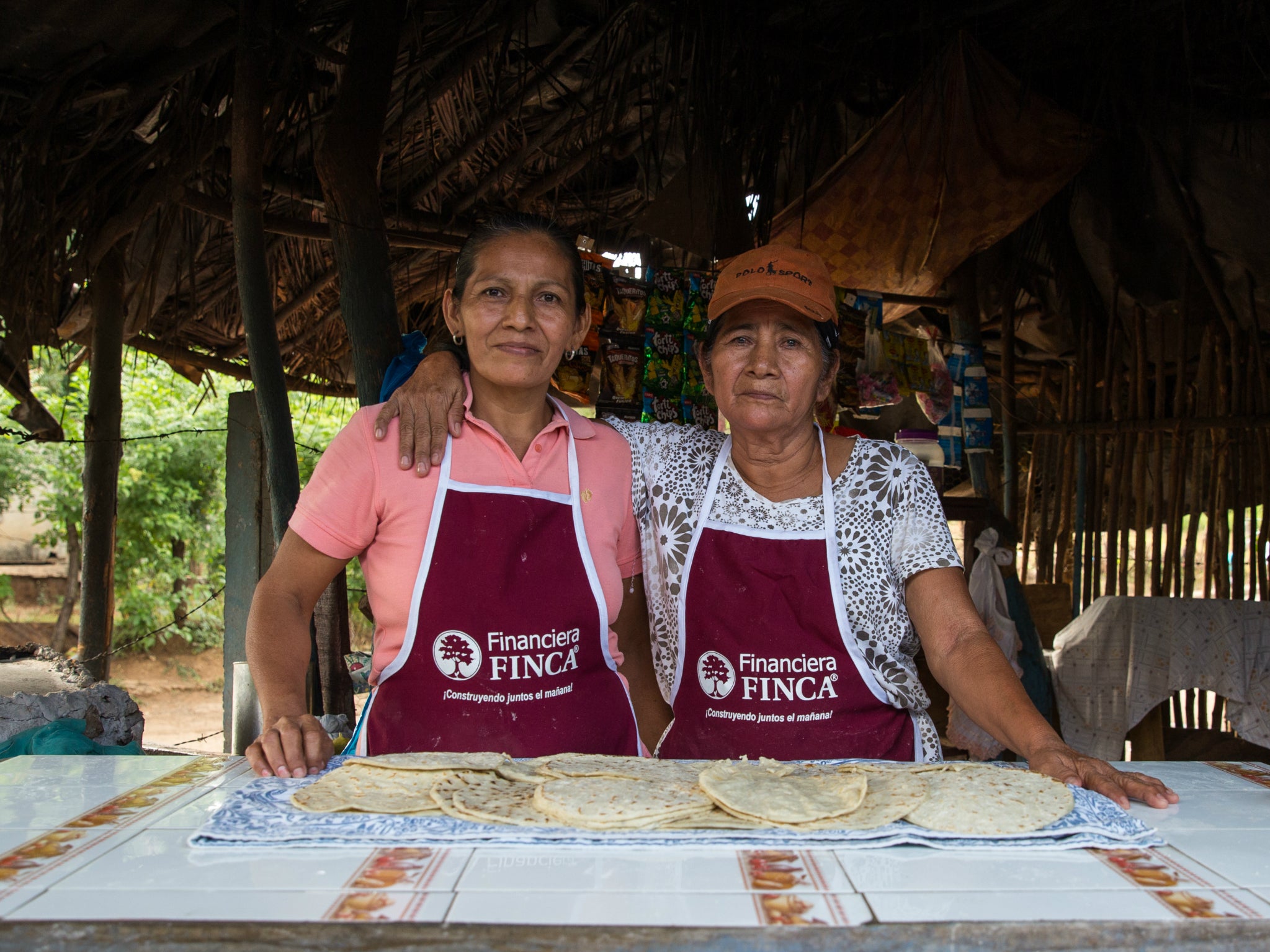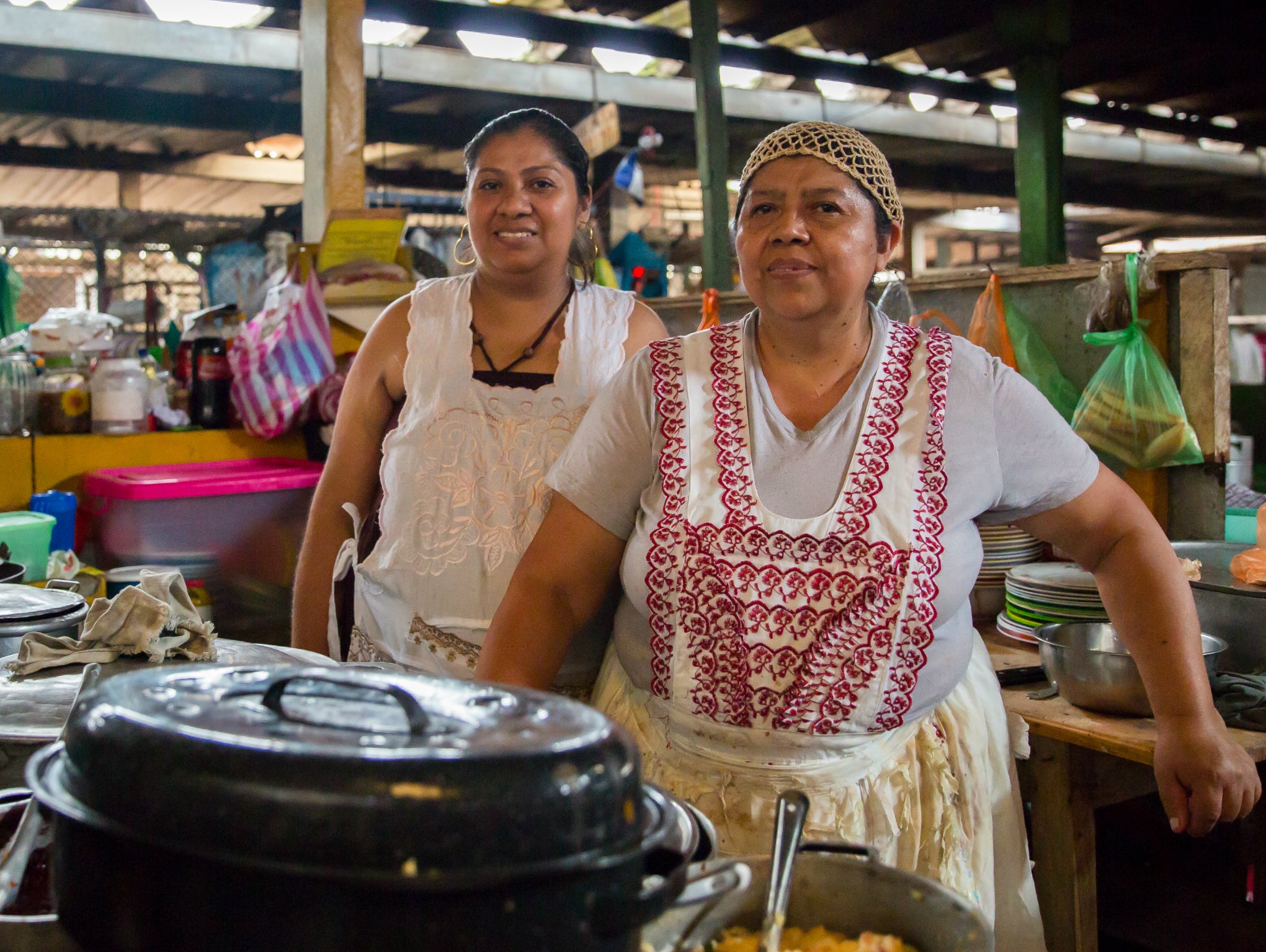Nicaragua teaches a lesson in the power of micro loans
Critics say the microfinance movement has not tackled poverty. But Rupert Scofield, founder of one of its largest lenders Finca, shows Matthew Glynn how it has changed lives

Your support helps us to tell the story
From reproductive rights to climate change to Big Tech, The Independent is on the ground when the story is developing. Whether it's investigating the financials of Elon Musk's pro-Trump PAC or producing our latest documentary, 'The A Word', which shines a light on the American women fighting for reproductive rights, we know how important it is to parse out the facts from the messaging.
At such a critical moment in US history, we need reporters on the ground. Your donation allows us to keep sending journalists to speak to both sides of the story.
The Independent is trusted by Americans across the entire political spectrum. And unlike many other quality news outlets, we choose not to lock Americans out of our reporting and analysis with paywalls. We believe quality journalism should be available to everyone, paid for by those who can afford it.
Your support makes all the difference.Driving through the streets of Managua in August, the realities of life for the citizens of the poorest country in Central America are starkly apparent.
Housing in Nicaragua’s capital city is a sprawling slum The mostly unpaved dirt streets don’t even have names. Transport for most people is standing on the back of a truck holding on to a makeshift scaffold with 15 other people, or hanging off the open backdoor of an overcrowded bus.
In 1972 an earthquake destroyed 90 per cent of the city with a death toll estimated at 11,000. The only sign of investment is an avenue of 6oft-high metal yellow “trees“ constructed two years ago.
I’m here to meet Rupert Scofield, founder and chief executive of Finca (Foundation for International Community Assistance), one of the world’s largest charitable banks with 1.8 million customers in 23 countries. Finca is a pioneer in microfinance – small loans, usually of a few hundred dollars, to people who would otherwise have no access to capital – and I’m visiting some of those customers to see what effect it is having on their lives.
It was in Central America that the idea of microfinance first came to Mr Scofield. Working for the US Peace Corps, assisting farmers in the highlands of Guatemala, he saw the effect even tiny loans could have on a community. Giving a small group of farmers the money to buy bags of fertiliser improved the depleted soil immediately and had a dramatic impact on their harvest.
It’s as necessary today in Nicaragua as it was then. According to Finca, 81 per cent of the population do not have a proper bank account and 41 per cent live below the poverty line. Nowadays, most people who take out a Finca loan are already micro-entrepreneurs, with the loans allowing them to make their businesses more profitable – to buy wholesale rather than retail, for example.
In the town of Jinotepe, about an hour’s drive south of Managua, we meet some of those clients with Mr Scofield. Looming a foot taller than most, this mild-mannered 66-year-old New Yorker who listens to Neil Young and sees himself, in his own words, as one of the “crazies from the 60s”, he leads us through a crowded market where he is greeted successively by stallholders selling cowboy boots or second-hand clothes.
We stop and talk with Juana Cano, a soup seller whose business is thriving thanks to the money she’s borrowed from Finca, which has allowed her to build a small house.
Over the two days I spend with Mr Scofield, I meet at least 15 customers with similar stories. Among them are Julia and her daughter Isabel, who get up at 4am and work till 5pm making and selling tortillas for the neighbourhood; the profits from the business have allowed Julia to buy a car.

Then there is Evana, who borrowed $200 to buy and sell cosmetics door to door, using the profits to pay her way through law school. I also meet Dona Julia Lilliam Ramirez, who runs a grocery store. A client of Finca for 19 years, she used her first loan to buy cleaning products in Managua to sell in the nearby villages. She now uses the proceeds of her business to feed poor children in the neighbourhood. “Gracias a dios, gracias a dios primero, y Rupert segundo,” she says during our meeting. “Thanks be to God, thanks be to God first and Rupert second.”
But microfinance has its critics. Finca has been in Nicaragua since 1992, and although it is clearly making a difference to people’s lives on a small scale, the underlying problems of poverty in the country are hardly being addressed. Academic studies in recent years have also come to the conclusion that there is no evidence microfinance has had any impact on world poverty.
I ask Mr Scofield what he thinks about that and he gives a characteristically passionate response: “We have 50,000 clients [in Nicaragua] and more added every day … If it’s really true that there’s no financial income impact, why are the poorest people on earth, whose time is very precious – we talked to those tortilla women, for godsakes, they get up at 4am and they work until 5pm – why would they do that if there was no impact on their income?
Moreover microfinancing, he believes, can play an important social role, even helping to combat terrorism. “I heard someone say the other day, ‘Let’s be clear, we’re not going to fight terrorism by helping poor people with microfinance’. Well, guess what, we are, and it’s the only way we’re going to do it.
“We ignore at our peril the social ills of countries like Pakistan and Afghanistan where there is high youth unemployment and people may give their kids to a madrassa and a radical imam otherwise they might starve to death. … So how can we combat that? We have to give the family an alternative, maybe an opportunity to access microfinance – the ability to start and run their own business.
“It’s not going to be the only solution… but business, done in a responsible way and done as a social enterprise, is the solution to many of the major ills in the world, including poverty and terrorism.”
It would be fair to say that most of the people I meet are benefiting from microfinance in some personal way . But they’re not really having an impact on the economy of the country as a whole. An exception, however, is Nelson Lopez, who runs a small citrus farm on an acre of land on the outskirts of Jinotepe. A loud, stockily built man of around 40, he employs four people, one of whom is busily watering row upon row of citrus and avocado plants neatly bagged in black plastic.
He has a two-year loan with Finca. He borrowed $10,000 and pays back around $3,700 every six months, though the figure falls as the interest is paid off. Mr Lopez owns his land but has used the money to buy everything else we see: soil, fertiliser, labour, insecticide. Of his 60,000 plants, he estimates the sale of 50,000 of them will pay off his loan, the remaining 10,000 giving him a profit of $8,000.
Mr Scofield explains that agricultural loans like this are a new thing for Finca. “He does have other choices, and if we didn’t treat him well he wouldn’t stay with Finca, but he’s also had the experience of another commercial bank , where he tried to get $13,000 loan for a truck. They turned him down. He got pissed off and said, ‘If a rich person had come in here trying to get a loan for a car, you would have given it to him immediately and he’d be driving it off the lot’ – and he stormed out. Basically, the banks don’t finance small producers like him, and that’s why it’s a big opportunity for us. Mr Lopez adds: “Without farmers, there’s no food. Those oranges, mandarins, they don’t get to the table.” He sees the growth of small landholders like himself as crucial to the development of his country.
Back in Managua, I sit down with Mr Scofield at a barbecue for his staff . We’re talking about the country’s Sandinista government and that era consumed by vicious civil wars between the left-wing guerillas and the counter-revolutionary Contras, not just in Nicaragua but throughout most of Central America.
It’s a subject he knows a lot about. After helping the farmers of Guatemala, he went to El Salvador to work for the American Institute for Free Labor Development on the country’s land reforms. He explains that the Salvadoran landlords didn’t take kindly to having their plantations expropriated, and were financing death squads to abduct and murder anyone associated with them. It was dangerous work and his boss, Mike Hammer, was assassinated, It could easily have been Mr Scofield. It’s emotional stuff. He has risked his life helping the poor and it’s hard to doubt his sincerity, then and now.
He knows Nicaragua’s problems can’t be solved just through entrepreneurship. It needs proper institutional reform, and he’s doubtful. Those metal yellow trees that line Bolivar avenue it turns out are called “Arboles della vida” – trees of life, supposedly symbols of growth and prosperity. They are estimated by some to have cost as much as $20,000 each.
Tomorrow Mr Scofield leaves for Honduras to see how Finca’s operations are doing there, and a few days later he’ll be in Mexico. I wonder if, 45 years since he worked with those Guatemalan farmers, he still has the commitment to it he had then. “The payoff is to see as many people as possible moving up that ladder” he says. “What really keeps me going is a day like today, meeting people like Nelson.”
Only time will tell whether Nelson gets to export his tropical plants or whether Evana has made it as a lawyer. But without banks like Finca — and with a government more interested in mystical yellow trees than people — they wouldn’t have stood a chance.
Join our commenting forum
Join thought-provoking conversations, follow other Independent readers and see their replies
Comments